
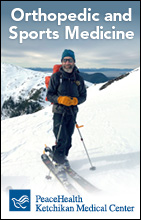




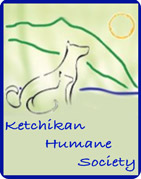



 Contact Contact 
 Webmail
Letters Webmail
Letters
 News Tips News Tips
 Copyright Info Copyright Info
 Archives Archives
Quick News
Search
 Alaska Alaska
 Ketchikan Ketchikan
 SE Alaska SE Alaska
Columns
- Articles
 Dave Kiffer Dave Kiffer
 Money Matters Money Matters
Historical
Ketchikan
 June Allen June Allen
 Dave
Kiffer Dave
Kiffer
 Louise
B. Harrington Louise
B. Harrington
Sports
 Ketchikan Links Ketchikan Links
Public Records
 FAA Accident Reports FAA Accident Reports
 NTSB
Accident Reports NTSB
Accident Reports
 Court Calendar Court Calendar
 Recent Filings & Case Dispositions Recent Filings & Case Dispositions
 Court Records Search Court Records Search
 Sex Offender Reg. Sex Offender Reg.
 Public Notices Public Notices
 Alaska Recall Alerts Alaska Recall Alerts
 Recalls.gov Recalls.gov
 AST Daily Dispatch AST Daily Dispatch
 KTN
Police Reports KTN
Police Reports
 Juneau Police Reports Juneau Police Reports
Weather,
Webcams
 Today's
Forecast Today's
Forecast
 KTN
Weather Data KTN
Weather Data
 AK
Weather Map AK
Weather Map
 AK Weathercams AK Weathercams
 AK Earthquakes AK Earthquakes

|
|

Tuesday
October 05, 2021
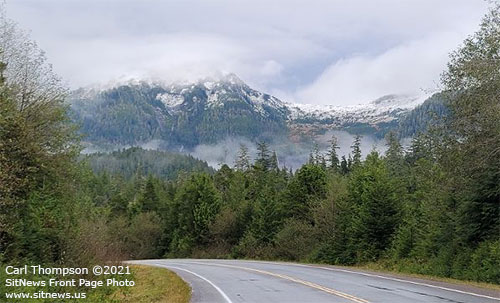
Termination Dust
As photographed from the Ward Lake road.
SitNews Front Page Photo by CARL THOMPSON ©2021
To have your photo(s) featured on the front page,
email your photo(s) to editor@sitnews.us |
Ketchikan Regular Election October 05, 2021 - Tuesday
Canvas Board Results 10/11/21 |
10/05/21 - KGB Unofficial Election Results (pdf)
20% Voter Turnout (11,856 Registered Voters, 1,977 Voter Turnout)
10/11/21 - KGB Canvas Board Unofficial Election Results (pdf)
10/05/21 - City of Ketchikan Unofficial Election Results (pdf)
18% Voter Turnout (6,727 Registered Voters, 959 Voter Turnout)
10/07/21 City of Ketchikan Unofficial Election Results (pdf)
City of Ketchikan Canvas Board Met 10/07/21 (Results not on website as of 10/11/21, requested and received 10/11/21)
KGB Canvas Board Meets 10/11/21 to count absentee, special and questioned ballots and to certify election results. Election results become final when accept by elected officials.
|
| Ketchikan Borough Assembly - 3 Year Term (2 Seats Open) |
 |
Darlene d-Svenson
10/25/21
496
10/11/21
585 |
 |
Jason Button
10/05/21
457
10/11/21
553 |
 |
Grant EchoHawk
10/05/21
809
10/11/21
989 |
 |
Carlos Weimer
10/05/21
625
10/11/21
741 |
 |
Jaimie Palmer
10/05/21
928
10/11/21
1,132 |
Write-Ins
10/05/21
24
10/11/21
30 |
| Ketchikan School Board - 3 Year Term (3 Seats Open) |
 |
Nicole Anderson
10/05/21
949
10/11/21
1,144 |
 |
Keenan Sanderson
10/05/21
787
10/1`1/21
945 |
 |
Tom Heutte
10/05/21
748
10/11/21
914 |
 |
Ali Ginter
10/05/21
748
10/11/21
883 |
 |
Stephen Bradford
10/05/21
1,090
10/11/21
1,315 |
Write-ins
10/05/21
29
10/11/21
32 |
Proposition 1: Extension of Marijuana Sales Tax
10/11/21 Canvas Board Unofficial Results |
YES 1,911
No 454 |
Proposition 2: Field Bonds
10/11/21 Canvan Board Unofficial Results |
Yes 1,870
No 515 |
Ketchikan City Mayor - 3 Year Term (1 Seat Open)
City Canvas Board Met 10/07/21. As of 10/11/21 not posted on City's website. Requested 10/11/21. |
 |
Dave Kiffer
10/05/21
840
10/11/11
992 |
Write-Ins
10/05/21
42
10/11/21
45 |
| Ketchikan City Council - 3 Year Term (2 Seats Open) |
 |
Jai Mahtani
10/05/21
529
10/11/21
628 |
 |
Janalee Gage
10/05/21
537
10/11/21
665 |
 |
Lallette Kistler
10/05/21
483
1011021
591 |
 |
Bronson Olson
10/05/21
34
10/11/21
46 |
Other write-ins 10/05/
21
28
10/11/21
22 |
| |
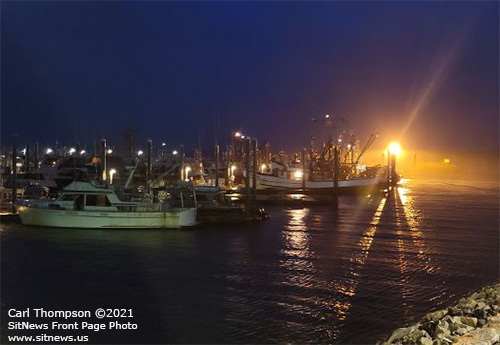
Bar Harbor
Morning photo of Bar Harbor after the recent high wind & heavy rain storm.
SitNews Front Page Photo by CARL THOMPSON©2021
To have your photo(s) featured on the front page,
email your photo(s) to editor@sitnews.us
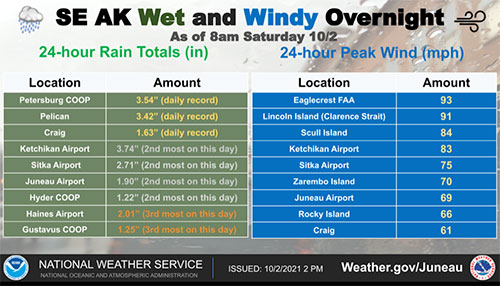
Click on the graphic for a larger image. |
|
Fish Factor: Bulk of earnings from Alaska’s fisheries won't be circulating through Alaska's economy By LAINE WELCH - The preliminary value to fishermen of the nearly 41 million salmon caught this summer at Alaska’s largest fishery at Bristol Bay is nearly $248 million, 64% above the 20-year average. That figure will be much higher when bonuses and other price adjustments are paid out.
But as with the fish bucks tallied from Alaska’s cod, pollock, flounders and other groundfish (a .78 share), the bulk of the Bay’s salmon money won’t be circulating through Alaska’s economy because most of the fishing participants live out of the state.
In 2017, for example, 62% of gross earnings from the Bristol Bay driftnet fishery and 40% from the setnet fishery left Alaska as nonresident earnings.
That’s due to the region experiencing an overall 50% decline in local permit holdings since Alaska began limiting entry into commercial salmon fisheries in 1975. Combined, residents of the Bristol Bay region now hold less than one-quarter of the region’s salmon permits.
The fishing communities of Pilot Point, Levelock, Egegik, Ekwok, Pedro Bay and Nondalton, respectively, lost more than 75% of their local permits.
The numbers come from a new report titled “Righting the Ship: Restoring Local Fishing Access and Opportunity in Bristol Bay Salmon Fisheries,” which examines how Alaska fisheries policy dating back nearly 50 years has gradually disenfranchised local residents from economic opportunities.
“In Bristol Bay communities, there’s been a sharp and costly decline in the number of people who are able to take part in the world’s most valuable salmon fishery. For the State of Alaska, this has led to a staggering loss of livelihood opportunity and personal income in a region often celebrated for its fishery abundance and wealth. The fact that much of this loss has occurred among Alaska Native fishing families and villages is especially concerning,” said Rachel Donkersloot who authored the 40-page report for The Nature Conservancy in Alaska.
A 2021 analysis of change in permit holdings among the more than 10,000 local and nonlocal shareholders of the Bristol Bay Native Corporation shows a 38% decline in setnet and drift permit holdings between 1980-2018 (1147 to 716 permits). Holdings for local shareholders suffered a greater loss of 47% (1001 to 531 permits).
Local participation has primarily declined as a result of permit transfers and migration of permit holders, the report says, adding “Since implementing Alaska’s Limited Entry Program, legislators, researchers, and rural and Alaska Native community leaders and fishermen have grappled with the consequences of creating a freely transferable permit system (i.e., permits that can be gifted, inherited, and/or bought and sold on the open market).
While it focuses on Bristol Bay, the report also describes the ways in which the limited entry system disproportionately disadvantages rural and Alaska Native fishing families and communities across the state.
It points out that statewide rural, local permit holdings have experienced a net loss of -2,459 permits since 1975, while urban and nonresident permit holdings have experienced net gains.
Between 1976-2016, for example, the villages of Angoon, Kake, Metlakatla and Hydaburg each suffered a loss of more than 60% of local permit holdings in the Southeast region. On Kodiak Island, the Native village of Ouzinkie lost 71% of its local permits and 61% at Old Harbor.
A key objective of the Limited Entry Act was to keep fishing rights in the hands of Alaskans dependent on fisheries, especially rural residents with limited economic opportunities. However, the opposite has happened.
“These shifts in who has access to Alaska’s commercial fisheries represent a yet-to-be fixed policy failure of the State,” the report states.
It documents how Limited Entry continues to negatively impact rural and Native fishing communities including “limited access to financing for permit purchases; a lack of earnings, credit, and credit history; higher borrowing costs; lower personal wealth; limited experience with debt, credit, and financial management; and limited access to and knowledge of capital markets and financing options.”
“A key problem with the application process was that it was modeled after a ‘non-rural fisherman’ in that it assumed that all fishermen were highly efficient, full-time fishermen, fully entrenched in the market economy, who “maintain written records of income, [with] sufficient education to comprehend a complex application process,” the report says, adding “These shortcomings were exacerbated by language and cultural barriers, poor outreach, and misinformation.”
The report outlines the programs and regulations that have been implemented to promote entry opportunities and support rural fisheries access in Alaska. It also describes the constitutional and statutory constraints that limit the design of these programs and, for example, points to solutions based on residency requirements that have been ruled unconstitutional.
“Rural fisheries access cannot be sufficiently preserved with the suite of tools available under current law. Legal interpretations have constrained efforts to ensure that the State’s natural resources benefit its citizens leaving open the question of whether the State constitution allows for the kinds of solutions that are actually going to work,” it states, adding that “new solutions are clearly needed to restore and sustain viable rural and small-scale fishing ways of life that underpin healthy rural communities.”
The report also presents a suite of policy options for sustaining rural fishery participation that have been used in other state and countries, and “plots a general course forward to support the Bristol Bay region and the State in advancing carefully tailored solutions to one of Alaska’s longest standing resource problems.”
“Such provisions could be piloted in Bristol Bay before expanding into other regions,” it adds. “Forty-five years after the first limited entry permits were issued, the State of Alaska has the benefit of hindsight, and the playbook of lessons learned and gains made in other fishing regions that are ahead of Alaska on this front. It’s time to catch up.” - More...
Sunday PM - October 03, 2021
|
|
Ketchikan Historical: The Drs. Dickinson; Husband and Wife Team
Served Ketchikan for Half a Century By DAVE KIFFER - George Dickinson, who practiced for 50 years in the First City, may not have been Ketchikan's first doctor, but he was Ketchikan's "first Medicine Man" according to those that knew him.
In 1980, Dr. Arthur Wilson, Sr. was interviewed by James Lindstrom, a young medical student. Wilson had come to Ketchikan in 1931 and knew Dickinson who practiced for more than half a century in the First City.
"George Dickinson was one of the last traveling medicine men," Wilson told Lindstrom in 1980. He said that Dickinson had traveled in the interior of Alaska for many years before coming to Ketchikan with Dr. Henry Story in 1899. Wilson said that Dickinson practiced - at least in his early days - without a license, which was in stark contrast to his wife Beatrice who was a graduate of the Northwestern University Medical School and one of the first female doctors in the Chicago area.
George Dickinson was particularly known for salves and potions and other products that were very popular with fishermen and miners in the early days. In his first years in Ketchikan, he also concentrated on operating the community's first drug store, where he could sell his potions, but later on he worked more as a doctor.
Lindstrom wrote that Beatrice Dickinson "kept George from overstepping his limitations" as a doctor, a characterization that Dr. Art Wilson Jr. recently agreed with.
Beatrice Pearce Dickinson was the daughter and sister of doctors in Lake County, Illinois and was supported by her family in her desire to be a doctor - eventually becoming the first female doctor in Lake County, according to a 2013 article on the Lake County Historical Society website. She had graduated from medical school in 1887 and started her own practice, specializing in women's and children's health in Waukegan, Illinois. She was also a prominent suffragette and served as treasurer of a regional woman's suffrage organization.
According to the historic society website, in 1908 she was attending a medical convention in Chicago when she met Dickinson. They married later that year. He was 38 and she was 42. - More...
Sunday PM - October 03, 2021
|
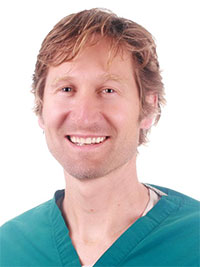
Joshua Schkrohowsky, MD
Photo courtesy PHKMC |
Ketchikan: PeaceHealth Ketchikan welcomes Joshua Schkrohowsky, MD, to general surgery team - PeaceHealth Medical Group announced that Joshua Schkrohowsky, MD, has recently joined their orthopedic team. As an expert in arthroscopic procedures of the knee and shoulder, Dr. Schkrohowsky expands the orthopedic treatment options in Ketchikan.
Dr. Schkrohowsky joins PeaceHealth Ketchikan from Lake Chelan Community Hospitals and Clinics in Chelan, WA. Dr. Schkrohowsky trained at Johns Hopkins University and completed his residency at the University of Pittsburgh with an emphasis on sports medicine. He has familiarity with Ketchikan having served as a relief surgeon with PeaceHealth Ketchikan over the last year and has been licensed in Alaska since 2014. His areas of expertise include knee replacement and realignments, ACL and cartilage repairs and reconstruction and carpal tunnel and trigger finger release repairs.
Dr. Schkrohowsky offers a conservative treatment of joint-related problems associated with injury or arthritis. Using a multi-disciplinary approach, he works with a patient to reduce symptoms and restore function. When surgery is necessary, he uses the latest, minimally invasive procedures. “I believe in a multimodal, multidisciplinary approach to treating musculoskeletal injuries and pain - starting with the simplest and least invasive treatment first. My goal is to treat every patient as if they were family,” shared Dr. Schkrohowsky. - More...
Sunday PM - October 03, 2021
|
|
Alaska: October is Domestic Violence Awareness Month - Each year Alaska recognizes October as Domestic Violence Awareness Month. Alaska Governor Mike Dunleavy, the Alaska Department of Public Safety, and the Alaska Council on Domestic Violence and Sexual Assault are committed to ending the high rates of domestic violence that inflict harm on Alaskan families.
Governor Dunleavy has issued an Alaska-specific proclamation for October as Domestic Violence Awareness Month in Alaska . The Governor encourages all Alaskans to stand together against domestic violence in our state and to support the healing of survivors.
"Public safety has been job number one for my administration since I took office, said Alaska Governor Mike Dunleavy. “Addressing the high rate of domestic violence that occurs in our state is a top priority. As a father of three wonderful daughters, I have a vested interest in making our state a safe place for Alaska's women and children. I won't rest until all Alaskans can live free of violence and crime."
In October, the Alaska Council on Domestic Violence and Sexual Assault (CDVSA), within the Department of Public Safety, is sponsoring a social media campaign to increase awareness of domestic violence in Alaska, educate Alaskans about the continuum of healthy, unhealthy, violent relations, and connect Alaskans to available resources. The resources provide information for victims, families, and those wishing to become engaged in the work to end violence.
"The Alaska Department of Public Safety and Alaska's law enforcement community is committed to doing our part to hold accountable those who victimize Alaskans and commit acts of domestic violence in our state," said Alaska Department of Public Safety Commissioner James Cockrell. "Once law enforcement responds to a domestic violence call, it is already too late, another Alaskan has already become a victim, and the crime has been committed. I call on Alaska's men to end this cycle of abuse with our generation and leave a better state for our kids and grandkids." - More...
Sunday PM - October 03,2021
Alaska: October 2021 is Fire Prevention Month - In Alaska, fire is a serious public safety concern with our cold and dark winters. As such, Governor Mike Dunleavy issued a proclamation to recognize October 2021 as Fire Prevention Month. National Fire Prevention Week is October 3 through 9.
The goal of this year’s campaign, “Learn the Sounds of Fire Safety.” Is to educate everyone about simple but important actions they can take to keep themselves and those around them safe.
The Alaska Department of Public Safety encourages all residents to embrace the 2021 Fire Prevention Week theme.
In 2020 there were a total of 16 fire deaths in Alaska. To date in 2021, there have been 10 fire deaths.
“It’s important to learn the different sounds of smoke and carbon monoxide alarms. When an alarm makes noise - a beeping sound or a chirping sound - you must take action!” said Virginia McMichael, Public Education Coordinator. “Make sure everyone in the home understands the sounds of the alarms and knows how to respond.”
The Alaska Division of Fire and Life Safety shares safety tips to help you “Learn the Sounds of Fire Safety”. - More...
Sunday PM - October 03, 2021
|

Life of a sockeye
By BJORN DIHLE
Brown bear fishing for salmon on Chichagof Island.
Photo by Bjorn Dihle © |
|
Alaska: Life of a sockeye By BJORN DIHLE - On July 22nd, news broke that Bristol Bay was having its biggest sockeye salmon return since recordkeeping began in 1893. More than 63 million sockeye had returned to the bay’s different watersheds and fish were still running. By the time the run was complete, almost 66 million sockeye had returned.
A few days later, I left town to guide a natural history brown bear film shoot in Southeast Alaska. One of the sequences we were trying to get was of a bear chasing salmon underwater. We had a camera in underwater housing submerged near the base of a raging waterfall. It could be operated from 100 yards away with an iPad. On its screen, I watched dozens of pink salmon and small, darting, feasting Dolly Varden. In the middle of the frenzy was a salmon with a crimson body and green head—a male sockeye salmon. It was swimming in place beneath the falls, waiting for the right moment to attempt climbing them so it could spawn in the small lake above. Bristol Bay has the largest sockeye run, not to mention the biggest wild salmon fishery, in the world. But in Southeast Alaska, especially where I was guiding on Chichagof Island, sockeye are far and few between.
I’ve guided a handful of other bear film projects on salmon streams. Some, like this one, had me in the field for a month. The main camera operator on this shoot paid homage to a spawned-out salmon by gently stroking its slimy flesh as it twitched in its final moments. A short while later, a young bear tore it apart and feasted on it. Rain fell heavy and often. I spent many hours alone operating the underwater camera. Bears walked by, sometimes a few yards away. Most would investigate the camera once and, seeing it was not a fish, leave it alone. A few would move the camera around. Once, when the camera was malfunctioning, a bear shook it and it began to work again. A day passed since I first saw the lone sockeye. Then another. The crimson salmon remained in almost the exact same place below the falls.
I spent a lot of time being still, surrounded by salmon in various phases of spawning, death and decomposition. The lifecycle of the sockeye salmon I spent hours watching was very similar to that of sockeye in Bristol Bay. It was born in the lake above the waterfall four or five years before. Of the five species of Pacific salmon—pink, chum, sockeye, coho and king—sockeye are most dependent upon lakes for spawning habitat. This makes the incredible river, lake and tundra habitat of Bristol Bay a paradise for sockeye. On the other hand, Southeast Alaska’s topography is generally steep, with short creek systems that are more ideal for pink and chum salmon. - More...
Sunday PM - October 03, 2021
|
|
Southeast Alaska: An early fall trip to Hasselborg Lake By MARY CATHARINE MARTIN - Four years ago this August, my partner Bjorn and I flew into Admiralty Island’s Hasselborg Lake. We fought through thick blueberry bushes and swarms of flies, angled our way up a steep, trail-less slope, and emerged into the alpine of a nearby mountain. A bear roared at us and crashed away.
We were in search of my first deer; with Bjorn’s expert coaching I shot two. We butchered them and stashed the meat in a shaded snowbank that had survived the summer, then camped on the ridge and carried the meat down the next day. We spent the rest of the visit fishing for cutthroat and guarding the meat from a marten that climbed down the rope we’d hung our full game bags from.
When our good friends Sam and Autumn suggested our two families and four boys fly to Hasselborg Lake this summer, we were happy to return. We planned to stay in two cabins just a hundred yards or so apart, and generally forget about cell phones, COVID and the stress of the last year and a half. The last year and a half, however, hadn’t forgotten about us. Some last-minute illness, a bad weather forecast, and unavoidable scheduling conflicts meant that Bjorn, our boys and I initially cancelled.
We ended up being able to fly in a day after Sam and Autumn. As we flew, our two-year-old son Shiras, sat on his dad’s lap in the front seat and concentrated, his brow furrowed, on the estuaries, streams, lakes, mountains and old-growth landscapes unfurling below us. Our seven-month-old, Theron, bounced on my lap. By the time Hasselborg Lake opened up below us, we were already happier, ready to skip our phones across the water like stones.
Hasselborg Lake is named for Allen Hasselborg, a reclusive man who homesteaded in nearby Mole Harbor for decades — and one of the two cabins we were staying in was originally built as a base for a scientific expedition he guided in the early 1900s. That cabin, Big Shaheen, is situated on the southern-facing shore of a point that looks out over the south part of the lake. Little Shaheen looks west, over the lake to Thayer Mountain, named for a timber surveyor who was the first — and, up until a few years ago, the only — person recorded as killed by brown bears on Admiralty during the last century.
That first evening, Sam rowed the kids around as Bjorn cooked. Shiras and Silas, the two oldest kids, raced to see who could help reel their parents’ catches in first. As Autumn and I woke throughout the night to feed the babies, a pair of loons called to each other across the lake. - More...
Sunday PM - October 03, 2021
|
CARL GOLDEN: JOE BIDEN VERSUS THE PRESS - The White House press corps is in a snit again because President Biden, who many reporters openly cheered on in last year’s election, has stiffed them repeatedly, refusing to answer their questions and – most recently – and tossing them unceremoniously out of the Oval Office.
Indignant, the White House Correspondents Association filed a protest with the administration’s communications office, where it will be routinely acknowledged and routinely ignored.
Given Biden’s successful campaigning from the basement of his home in Wilmington, Del., last year while the nation was in the COVID-19 pandemic lockdown, his strategists concluded the same approach could be applied with equally favorable results in the White House.
It appears the president’s senior staff reached a judgment that minimizing interactions between the president and reporters is in his best interest. The likelihood of change in the face of media complaints no matter how well founded is nonexistent. - More...
Sunday PM - October 03, 2021
RICH MANIERI: THE LIE ABOUT BORDER PATROL AGENTS IS STILL A LIE - Simply saying something over and over doesn’t make it so. I know because I’ve tried it. No matter how many times I say, “I’m a good golfer, I’m a good golfer,” the reality is I still stink, as anyone who has seen me on the course will verify.
Yet, the George Costanza it’s-not-a-lie-if-you-believe-it strategy is alive and thriving in the highest levels of government and media.
For Exhibit A – and there are others but we’ll just stick with this one – let’s examine the “Border patrol agents on horses seen whipping migrants” story. The problem with this story is it never actually happened but the president of the United States, his administration, and too many media outlets pretended it did.
At a press conference on Friday, President Biden threatened border patrol agents.
“It’s outrageous. I promise you those people will pay.” Pay how and for what, we’re not sure.
“It was horrible to see what you saw, to see people treated like they did — horses nearly running them over, people being strapped,” Biden said. - More...
Sunday PM - October 03, 2021
FINANCIAL FOCUS: Prepare yourself financially for illness … just in case Provided By BEN EDWARDS, AAMS® - All of us hope to live long, healthy lives, so we do what we can to take care of ourselves through proper diet, exercise and avoiding unhealthy activities. However, none of us can predict our future, so it pays to be prepared for anything – including a serious physical illness or the onset of some type of mental incapacity, such as Alzheimer’s disease.
Of course, you may never face these infirmities, but you should be aware that they could upset your long-term financial strategy and place considerable stress on your loved ones. What steps can you take to head off these threats?
First, make sure you know what your health insurance covers and how much you might have to pay out of pocket for treatment of illnesses such as cancer or kidney ailments. If you’re on Medicare (supplemented with Medigap) or Medicare Advantage (Medicare Part C), you’ll want to know all about deductibles, copayments and coinsurance. However, if Alzheimer’s or another type of dementia is involved, Medicare may not cover the costs that could be incurred in an assisted living facility, so you may want to consult with a financial advisor, who can suggest ways of protecting yourself from long-term care costs, which can be quite high.
- More...
Sunday PM - October 03, 2021
|
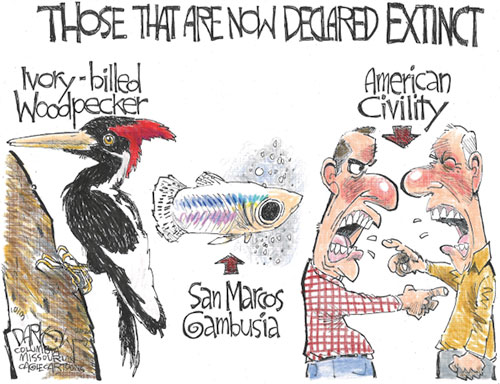
Political Cartoon: Extinction of civility
by John Darkow©2021, Columbia Missourian
Distributed to subscribers by CagleCartoons.com

Political Cartoon: Biden Control and Power
by Dick Wright©2021, PoliticalCartoons.com
Distributed to subscribers by CagleCartoons.com

Political Cartoon: Democrats Infighting
by Daryl Cagle ©2021, CagleCartoons.com
Distributed to subscribers by CagleCartoons.com

Political Cartoon: Build Back Better
by Bruce Plante©2021, PoliticalCartoons.com
Distributed to subscribers by CagleCartoons.com

Political Cartoon: USPS DeJoy slower mail
by Dave Granlund©2021, PoliticalCartoons.com
Distributed to subscribers by CagleCartoons.com |
Regarding the Redistricting Meeting at the TFCC, 10/6, 4:30 - 6:30; Please attend this meeting. By Kathleen Yarr - On the heels of the 2020 Census, the Redistricting Board is taking recommendations on six Proposed Plans to redraw the 40 legislative districts in Alaska. We live in District 36, which includes Ketchikan, Metlakatla and Hydaburg. It is compact, fairly contiguous (considering we live on islands) and we share some of the same concerns and demographics of these communities.
Personally, I am happy with this configuration. I do not want to be lumped in with Sitka. - More...
Wednesday - October 06, 2021
Southeast Conference 2021 By Amanda (AJ) Pierce and Austin Otos
- We recently had the opportunity to attend the 2021 Southeast Conference in Haines, Alaska. Every year, the conference showcases economic development opportunities and projects throughout the Southeast region. This year’s conference focused on various pecuniary topics including updates on: visitor industry, natural resource development, healthcare infrastructure, broadband initiatives, mariculture, energy projects, and AMHS transportation plans.
Some key groups from Ketchikan were present such as; TFCU (Tongass Federal Credit Union), The Ketchikan Chamber of Commerce, Grow Ketchikan, Foraged and Found, Vigor, Small Business Development Center (SBDC), and the City of Ketchikan. These important local stakeholders represented our local community investment in the economic well-being and future of our Alaskan region.
The conference consisted of presentations on “Southeast by the Numbers” by Rain Coast Data that focused on economic and demographic changes from the previous year. The main takeaway here is that COVID played a major role in economic loss (as we all know) by reducing employment in the visitor industry which trickled down to local government’s inability to operate with a predictable budget. The panel on the infrastructure bill and American Rescue Plan Act 2021 (ARPA) highlighted the amounts of money that are to be slated for Alaska and various projects expected to be funded. AMHS ferries will receive $1 billion in funds for new construction with the promise of funding a pilot program for electric ferries. Its important to note that the Ketchikan Gateway Borough will be receiving up to $2.7 million in ARPA funding which will be used to back fill our budget deficit and help elevate our local governments budgetary woes.
- More...
Sunday PM - October 03, 2021
 |
An Open Letter to Mary Kauffman by Dan Bockhorst
- Mary, thanks for your years of valued service to Ketchikan as editor, publisher, and webmaster of SitNews.
For nearly a quarter century, SitNews has been the premier local forum for those who wish to share viewpoints about topics of interest to your readers. Prominently stated in your invitation for commentary is a 1949 declaration by U.S. Supreme Court Justice William O. Douglas: “The function of free speech under our system of government is to invite dispute. It may indeed best serve its high purpose when it induces a condition of unrest, creates dissatisfaction with conditions as they are, or even stirs people to anger. Speech is often provocative and challenging. It may strike at prejudices and preconceptions that have profound unsettling effects as it pressures for the acceptance of an idea.”
- More...
Sunday PM - September 26, 2021
 |
Alaska Will Greatly Benefit from Historic Infrastructure Bill By U.S. Senator Lisa Murkowski
- everal years ago, the American Society of Civil Engineers gave Alaska’s infrastructure a C-minus grade. Their report reiterated what too many Alaskans know and face every day: our still-young state is deficient in water and wastewater, ports and harbors, marine transportation, energy and power infrastructure, and more. Even in our highest-graded areas – like roads and airports – Alaska still has plenty of room for improvement.
One of the best ways to address these deficiencies is by bringing timely federal funding and assistance back home. That’s where I have placed my focus, and an historic infrastructure bill that will deliver massive benefits to our state is now within reach.- More...
Sunday PM - September 26, 2021
Charting a course for the next century of maritime policy
By U.S. Congressman Don Young
- When the chapter about the COVID-19 pandemic is written in Alaska’s history, it will be remembered as a time of resilience, shared sacrifice, and the never-give-up spirit that lives within all Alaskans. With new tools for economic development and prosperity, I believe Alaska can come back stronger than ever before.
COVID-19 exposed critical vulnerabilities in Alaska’s economy, which required emergency action to save a portion of the 2021 summer cruise season. The return of cruise ships to southeast Alaska brought much-needed economic activity to the region. But it also served as a reminder that, in the future, we cannot allow such a vital portion of our economy to be held hostage by a foreign country, in this case, Canada.
- More...
Friday AM - September 24, 2021
|
Articles &
photographs that appear in SitNews may be protected by copyright
and may not be reprinted or redistributed without written permission
from and payment of required fees to the proper sources.
E-mail your news &
photos to editor@sitnews.us
Photographers choosing to submit photographs for publication to SitNews are in doing so, granting their permission for publication and for archiving. SitNews does not sell photographs. All requests for purchasing a photograph will be emailed to the photographer.
|
|
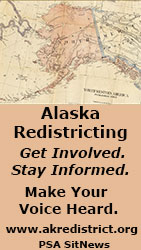
The Alaska Redistricting Board will be holding Public Testimony in Ketchikan:
Date: Wednesday, October 6, 2021
Time: 4:30pm-6:30pm
Location: Ted Ferry Civic Center, 888 Venetia Way
Online Public Notice
Written Testimony can be emailed. |












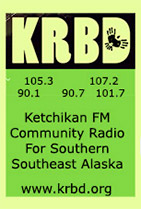
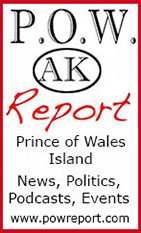

|
|
![]() Contact
Contact ![]()
![]() Webmail
Letters
Webmail
Letters![]()
![]() News Tips
News Tips![]()
![]() Copyright Info
Copyright Info![]() Archives
Archives![]() Alaska
Alaska![]() Ketchikan
Ketchikan![]() SE Alaska
SE Alaska![]() Dave Kiffer
Dave Kiffer![]() Money Matters
Money Matters ![]() June Allen
June Allen![]() Dave
Kiffer
Dave
Kiffer![]() Louise
B. Harrington
Louise
B. Harrington ![]() Ketchikan Links
Ketchikan Links![]() FAA Accident Reports
FAA Accident Reports ![]() NTSB
Accident Reports
NTSB
Accident Reports![]() Court Calendar
Court Calendar![]() Recent Filings & Case Dispositions
Recent Filings & Case Dispositions ![]() Court Records Search
Court Records Search![]() Sex Offender Reg.
Sex Offender Reg.![]() Public Notices
Public Notices![]() Alaska Recall Alerts
Alaska Recall Alerts![]() Recalls.gov
Recalls.gov![]() AST Daily Dispatch
AST Daily Dispatch![]() KTN
Police Reports
KTN
Police Reports![]() Juneau Police Reports
Juneau Police Reports ![]() Today's
Forecast
Today's
Forecast![]() KTN
Weather Data
KTN
Weather Data![]() AK
Weather Map
AK
Weather Map![]() AK Weathercams
AK Weathercams![]() AK Earthquakes
AK Earthquakes

























































